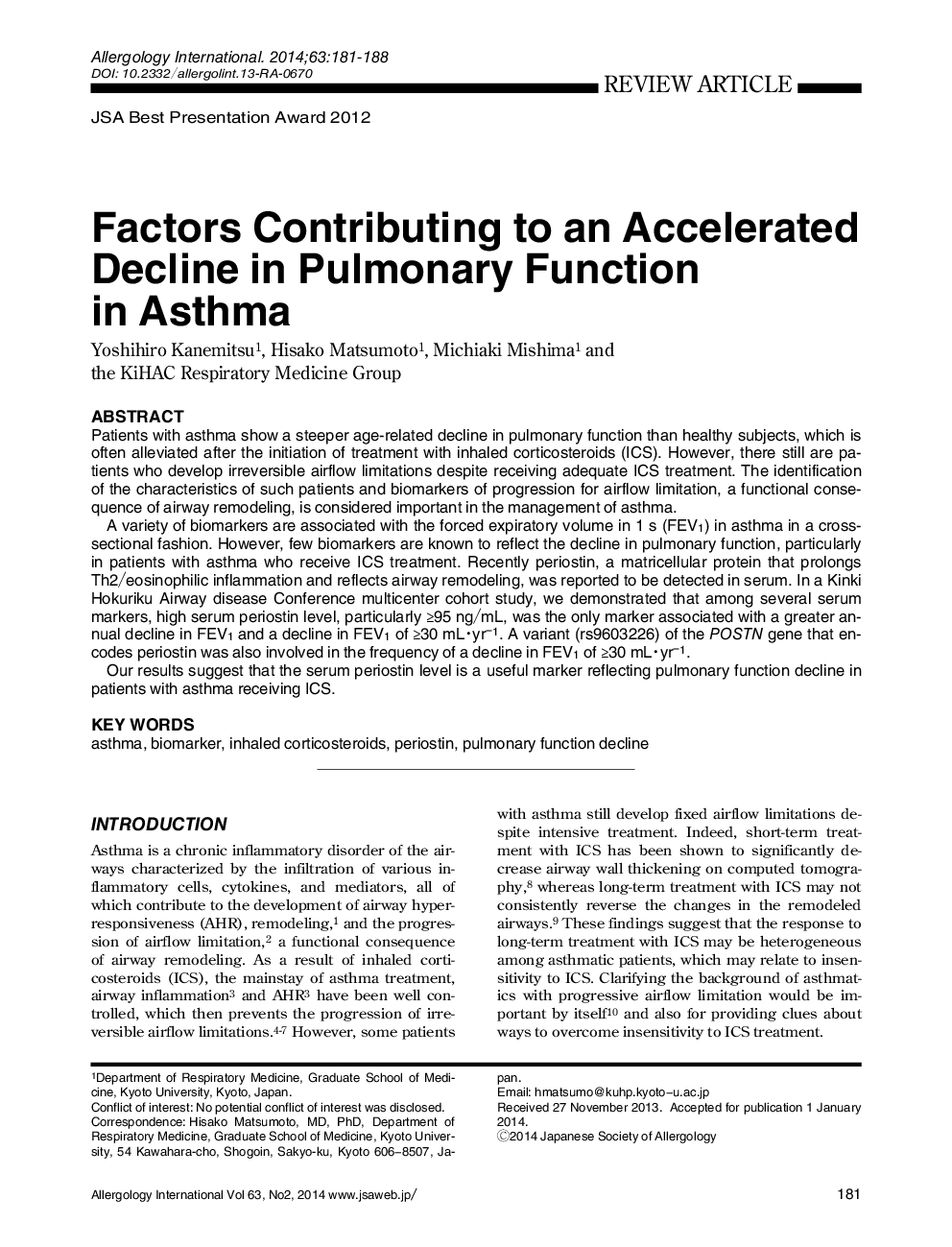| Article ID | Journal | Published Year | Pages | File Type |
|---|---|---|---|---|
| 3340677 | Allergology International | 2014 | 8 Pages |
ABSTRACTPatients with asthma show a steeper age-related decline in pulmonary function than healthy subjects, which is often alleviated after the initiation of treatment with inhaled corticosteroids (ICS). However, there still are patients who develop irreversible airflow limitations despite receiving adequate ICS treatment. The identification of the characteristics of such patients and biomarkers of progression for airflow limitation, a functional consequence of airway remodeling, is considered important in the management of asthma.A variety of biomarkers are associated with the forced expiratory volume in 1 s (FEV1) in asthma in a cross-sectional fashion. However, few biomarkers are known to reflect the decline in pulmonary function, particularly in patients with asthma who receive ICS treatment. Recently periostin, a matricellular protein that prolongs Th2/eosinophilic inflammation and reflects airway remodeling, was reported to be detected in serum. In a Kinki Hokuriku Airway disease Conference multicenter cohort study, we demonstrated that among several serum markers, high serum periostin level, particularly ≥ 95 ng/mL, was the only marker associated with a greater annual decline in FEV1 and a decline in FEV1 of ≥ 30 mL-yr- 1∙ A variant (rs9603226) of the POSTN gene that encodes periostin was also involved in the frequency of a decline in FEV1 of ≥ 30 mL-yr- 1.Our results suggest that the serum periostin level is a useful marker reflecting pulmonary function decline in patients with asthma receiving ICS.
